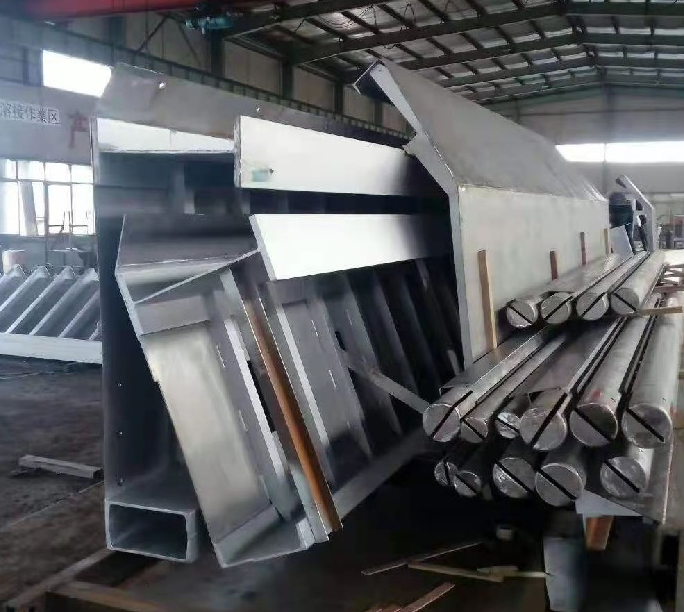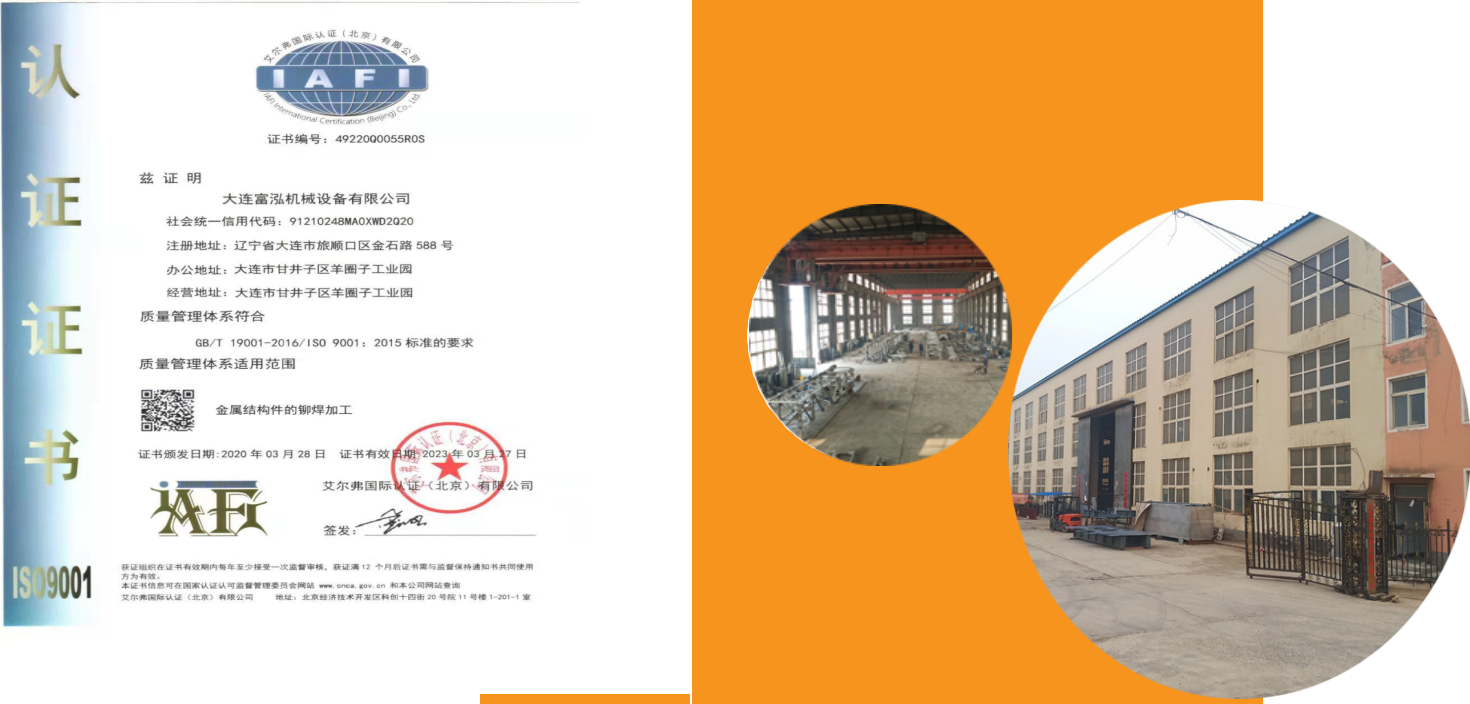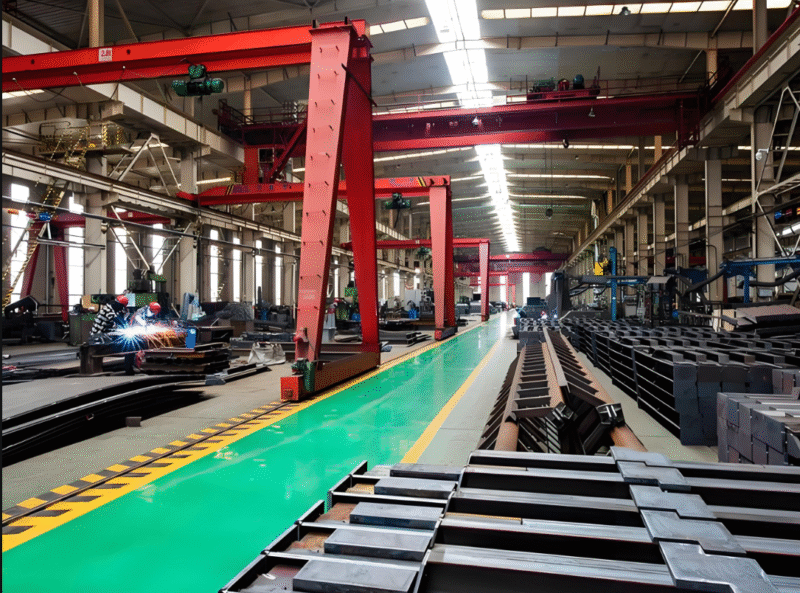Erilaisia laakerityyppejä ja valmiita koneistettuja tuotteitaShowcase: Professional Guide and Example Explanation: Professional Guide and Example Explanation
Yleiskatsaus tukityyppeihin ja niiden teollisiin sovelluksiin
Laakerit ovat mekaanisten järjestelmien ja rakennusten rakenteiden välttämättömiä komponentteja, joilla on tärkeitä tuki-, kiinnitys- ja pehmustustehtäviä. Teollisuudessa laakereiden valinnalla on suora vaikutus laitteiden vakauteen, käyttöikään ja toiminnan tehokkuuteen. Tässä artikkelissa esittelemme kattavasti erityyppiset laakerit ja näytämme esimerkkejä valmiista tuotteista tarkkuuskoneistuksen jälkeen, jotta voit ymmärtää eri laakereiden ominaisuuksia ja käyttöskenaarioita.
Kiinteiden laakereiden ominaisuudet ja työstökohdat![图片[1]-各种支座类型带机加工成品展示(支座类型概述及其工业应用) - cndlfh.com-cndlfh.com](https://cndlfh.com/wp-content/uploads/2025/05/02.png)
Kiinteät laakerit ovat yksi yleisimmistä laakerityypeistä, ja niille on ominaista niiden kyky rajoittaa tuetun osan siirtymä kokonaan. Valmiilla tarkkuustyöstetyllä kiinteällä laakerilla on tyypillisesti seuraavat ominaisuudet:
Erittäin tarkat kiinnitysreiät takaavat täydellisen yhteensopivuuden laitteiden kanssa.
Lämpökäsitellyt, lujat materiaalit pitkäaikaista vakaata tukea varten.
Hieno pintakäsittely, mukaan lukien korroosionestoprosessit, kuten galvanointi, mustaus tai ruiskutus
Tiukka mittatoleranssin hallinta (yleensä ±0,05 mm:n tarkkuudella).
![图片[2]-各种支座类型带机加工成品展示(支座类型概述及其工业应用) - cndlfh.com-cndlfh.com](https://cndlfh.com/wp-content/uploads/2025/05/03.png)
Kiinteää tukea työstettäessä on kiinnitettävä erityistä huomiota vertailupintojen valintaan ja työstöjärjestyksen järjestelyihin, jotta varmistetaan asennuspinnan kohtisuoruus- ja yhdensuuntaisuusvaatimukset.
Liukulaakereiden suunnittelu ja esittely
Liukulaakerit mahdollistavat tuetun komponentin siirtymisen tiettyyn suuntaan, ja ne soveltuvat erityisesti sovelluksiin, joissa lämpölaajeneminen ja supistuminen ovat merkittäviä. Valmiiksi työstettyjen liukulaakereidemme näytteeseen kuuluu:
PTFE-liukulaakeri: käyttää PTFE-liukumateriaalia, kitkakerroin on niinkin alhainen kuin 0,05-0,10.
Ruostumattomasta teräksestä valmistetut liukulaakerit: soveltuvat korkeisiin lämpötiloihin tai syövyttäviin ympäristöihin.
Komposiittiliukulaakerit: metallisten ja ei-metallisten materiaalien etujen yhdistäminen.![图片[8]-各种支座类型带机加工成品展示(支座类型概述及其工业应用) - cndlfh.com-cndlfh.com](https://cndlfh.com/wp-content/uploads/2025/05/09.png)
Liukulaakereiden työstön avain on liukupinnan pinnankarheuden hallinnassa (yleensä vaaditaan Ra≤0,8μm) ja sovitusraon tarkassa määrittelyssä (yleensä 0,1-0,3 mm).
Eri laakerityyppien työstöprosessi
Raaka-aineiden valinta ja esikäsittely
Eri laakerityypeillä on erilaiset materiaalivaatimukset:
Tavallinen hiiliteräs (Q235B): taloudellinen valinta yleisiin ympäristöihin.
Ruostumaton teräs (304/316): kun vaaditaan korkeaa korroosionkestävyyttä.
Seosteräs (40Cr/42CrMo): suuri kuormitus, korkea lujuus sovellusskenaariot.
Materiaalin esikäsittelyyn kuuluvat prosessit, kuten suoristus, kalkinpoisto ja virheiden havaitseminen, joilla varmistetaan, että raaka-aineissa ei ole sisäisiä vikoja eikä pintavirheitä.
Tarkkuuskoneistusvaiheet yksityiskohtaisesti
Sorvausprosessi: ulkoisen ympyrän, päätypinnan ja sisäisen reiän työstön tukirungon loppuunsaattaminen
Jyrsintäprosessi: kiinnitystasojen, avainkanavien ja erimuotoisten rakenteiden työstö.
Poraus ja kierteitys: kiinnitysreikien ja kierteitettyjen reikien täydellinen työstö.
Hionnan viimeistely: kriittisten vastinpintojen tarkkuushionta.
Pintakäsittely ja laadun tarkastus
Koneistuksen jälkeen tuki on käytävä läpi:
Hiekkapuhallus: parantaa pinnan tarttuvuutta ja estetiikkaa.
![图片[3]-各种支座类型带机加工成品展示(支座类型概述及其工业应用) - cndlfh.com-cndlfh.com](https://cndlfh.com/wp-content/uploads/2025/05/04.png)
Korroosionestokäsittely: pinnoitus, hapetus tai ruiskutus ympäristön käytön mukaan.
Mittatarkastus: täysikokoinen tarkastus CMM:llä
Suorituskyvyn testaus: mukaan lukien kuormitustestaus, väsymistestaus jne.
![图片[4]-各种支座类型带机加工成品展示(支座类型概述及其工业应用) - cndlfh.com-cndlfh.com](https://cndlfh.com/wp-content/uploads/2025/05/05.png)
Esimerkkejä erikoislaakerityyppien työstöstä
Seismisten laakereiden käsittelytekniikka
Seismiset laakerit vaativat erityisiä energiaa haihduttavia rakenteita, joissa on koneistettuja ominaisuuksia, kuten:
Monikerroksinen teräksen ja kumin vuorotteleva laminoitu rakenne
Korkean tarkkuuden leikkauspaneelien käsittely
Suuren halkaisijan ankkuripultin reikien tarkkuustyöstö
Erityisten vaimennusrakenteiden kokoonpanotarkkuuden valvonta
Pallomaisten laakereiden valmistusprosessi
Kuulalaakereita käytetään laajalti silloissa ja suurissa laitteissa niiden monisuuntaisen pyörimisominaisuuden vuoksi, ja niiden työstövaikeudet ovat:
Pallomaisten vastakappaleiden työstö (pallomaisuuden on yleensä oltava ≤0,05 mm).
PTFE-levyjen inlay-prosessi
Tiivistysrakenteiden tarkkuustyöstö
Integroitu esipuristustekniikka
![图片[5]-各种支座类型带机加工成品展示(支座类型概述及其工业应用) - cndlfh.com-cndlfh.com](https://cndlfh.com/wp-content/uploads/2025/05/06.png)
Laakerin valintaopas ja teknisten parametrien vertailu
Laakerien valinta kuormitustyypin mukaan
Kuormitustyyppi Suositeltu tuki Työstöominaisuudet
Staattiset kuormat Kiinteät laakerit Rakenteellisen lujuuden ja asennustarkkuuden korostaminen
Dynaamiset kuormitukset Elastomeeriset laakerit Keskittyminen vaimennuselementtien käsittelyn laatuun![图片[6]-各种支座类型带机加工成品展示(支座类型概述及其工业应用) - cndlfh.com-cndlfh.com](https://cndlfh.com/wp-content/uploads/2025/05/07.png)
Iskukuormat Hydrauliset kiinnikkeet Tarkasti istuva mäntärakenne tarpeen
Terminen siirtymä liukulaakerit Liukupinnan viimeistely on kriittistä
Tuen valinta ympäristön käyttötarkoituksen mukaan![图片[7]-各种支座类型带机加工成品展示(支座类型概述及其工业应用) - cndlfh.com-cndlfh.com](https://cndlfh.com/wp-content/uploads/2025/05/08.png)
Syövyttävät ympäristöt: Ruostumaton teräs tai erikoispinnoitetut laakerit ovat suositeltavia.
Korkean lämpötilan ympäristö: on otettava huomioon lämpölaajenemiskertoimen vastaavuus ja korkean lämpötilan lujuus.
Puhdastilat: Pölyttömien rakenteiden ja irtoamisen estävien rakenteiden valinta.
Ulkoilmalle altistuminen: tehostettujen UV-vanhenemiskäsittelyjen tarve










暂无评论内容